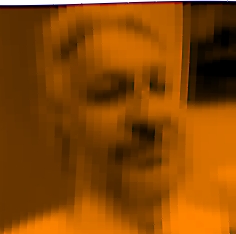Historical Features
Forum home - Go back to Historical Features
|
Valve manufacture
|
|
|
Return to top of page · Post #: 31 · Written at 6:33:31 PM on 28 September 2014.
|
|
|
|
Location: Sydney, NSW
Member since 28 January 2011 Member #: 823 Postcount: 6887 |
|
when plasma televisions were first release for sale. $30,000.00 for that please. |
|
|
Return to top of page · Post #: 32 · Written at 6:57:55 PM on 28 September 2014.
|
|
|
|
Administrator
Location: Naremburn, NSW
Member since 15 November 2005 Member #: 1 Postcount: 7564 |
|
Hard to believe the transaction went through. Surely floor limits are still lower than that even today, which would ordinarily require the store to ring the card issuer to confirm status and sufficient funds prior to the transaction. ‾‾‾‾‾‾‾‾‾‾‾‾‾‾‾‾‾‾‾‾‾‾‾‾‾‾‾‾‾‾‾‾‾‾‾‾‾‾‾‾‾‾‾‾‾‾‾‾‾‾‾‾‾‾‾‾‾‾‾‾‾‾‾‾‾‾‾‾ A valve a day keeps the transistor away... |
|
|
Return to top of page · Post #: 33 · Written at 8:17:22 PM on 28 September 2014.
|
|
|
|
Location: Sydney, NSW
Member since 28 January 2011 Member #: 823 Postcount: 6887 |
|
^ The transaction was duly authorsied by the card issuer. The card was valid, but stolen on the day it was used. The address was in the Eastern Suburbs. These guys (a gang from Singapore) were experts at this type of card scam which was rife in the day -- talk to any long timer in retail. The store wore the loss and that is why store policy prohibited such transaction by phone. |
|
|
Return to top of page · Post #: 34 · Written at 8:31:45 PM on 28 September 2014.
|
|
|
|
Administrator
Location: Naremburn, NSW
Member since 15 November 2005 Member #: 1 Postcount: 7564 |
|
There has been talk of dispensing with the magnetic stripes and it'll come not a day too soon I reckon. If an EFTPOS machine can read the card via the contacts then ATMs should be able to do it too. There's also been talk of standard ATM cards being fitted with the same technology as credit and debit cards have and this would make ATM cards as secure as those offered by Amex, Visa, MasterCard and Diners. ‾‾‾‾‾‾‾‾‾‾‾‾‾‾‾‾‾‾‾‾‾‾‾‾‾‾‾‾‾‾‾‾‾‾‾‾‾‾‾‾‾‾‾‾‾‾‾‾‾‾‾‾‾‾‾‾‾‾‾‾‾‾‾‾‾‾‾‾ A valve a day keeps the transistor away... |
|
|
Return to top of page · Post #: 35 · Written at 9:54:53 AM on 1 April 2016.
|
|

|
Location: Sydney, NSW
Member since 16 January 2008 Member #: 219 Postcount: 67 |
|
Regarding various tales of people allegedly making their own valves at home: |
|
|
Return to top of page · Post #: 36 · Written at 5:31:22 PM on 1 April 2016.
|
|
|
|
Location: Sydney, NSW
Member since 28 January 2011 Member #: 823 Postcount: 6887 |
|
This American replicates 1913 Type C triode tube construction. He uses getters. He tests the Gm to show that the freshly made tube actually works. |
|
|
Return to top of page · Post #: 37 · Written at 9:20:23 PM on 1 April 2016.
|
|
|
|
Location: Sydney, NSW
Member since 28 January 2011 Member #: 823 Postcount: 6887 |
|
"The Vacuum Tube -- A Modern Aladdin's Lamp" AT&T 1940: https://www.youtube.com/watch?v=_-JzxX75oYc |
|
|
Return to top of page · Post #: 38 · Written at 1:32:07 PM on 9 April 2016.
|
|

|
Location: Sydney, NSW
Member since 16 January 2008 Member #: 219 Postcount: 67 |
|
|
|
|
Return to top of page · Post #: 39 · Written at 3:49:07 PM on 9 April 2016.
|
|
|
|
Location: Sydney, NSW
Member since 28 January 2011 Member #: 823 Postcount: 6887 |
|
I reckon that video certainly demonstrates that you need the right equipment plus skill and experience to make a valve. |
|
|
Return to top of page · Post #: 40 · Written at 6:00:47 PM on 10 April 2016.
|
|
|
|
Location: Toowoomba, QLD
Member since 1 December 2015 Member #: 1834 Postcount: 42 |
|
Photo at Wyong ham radio field day 2016 of home made valves. |
|
|
You need to be a member to post comments on this forum.
|
|

Sign In

Vintage Radio and Television is proudly brought to you by an era where things were built with pride and made to last.
DISCLAIMER: Valve radios and televisions contain voltages that can deliver lethal shocks. You should not attempt to work on a valve radio or other electrical appliances unless you know exactly what you are doing and have gained some experience with electronics and working around high voltages. The owner, administrators and staff of Vintage Radio & Television will accept no liability for any damage, injury or loss of life that comes as a result of your use or mis-use of information on this website. Please read our Safety Warning before using this website.
WARNING: Under no circumstances should you ever apply power to a vintage radio, television or other electrical appliance you have acquired without first having it checked and serviced by an experienced person. Also, at no time should any appliance be connected to an electricity supply if the power cord is damaged. If in doubt, do not apply power.
Shintara - Keepin' It Real · VileSilencer - Maintain The Rage


 GTC
GTC